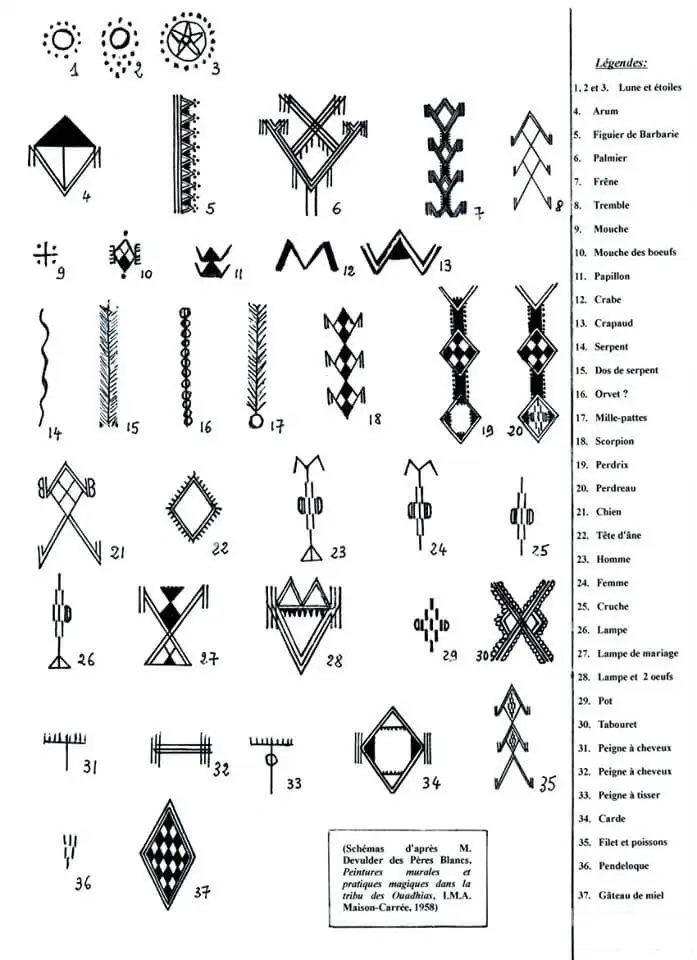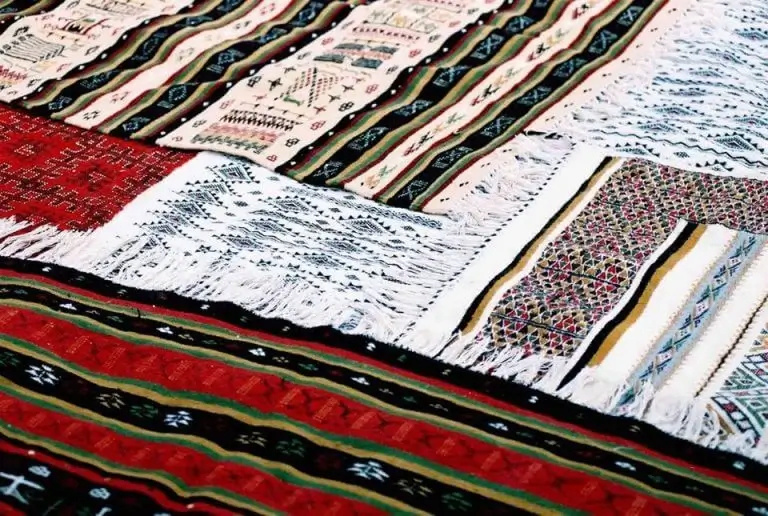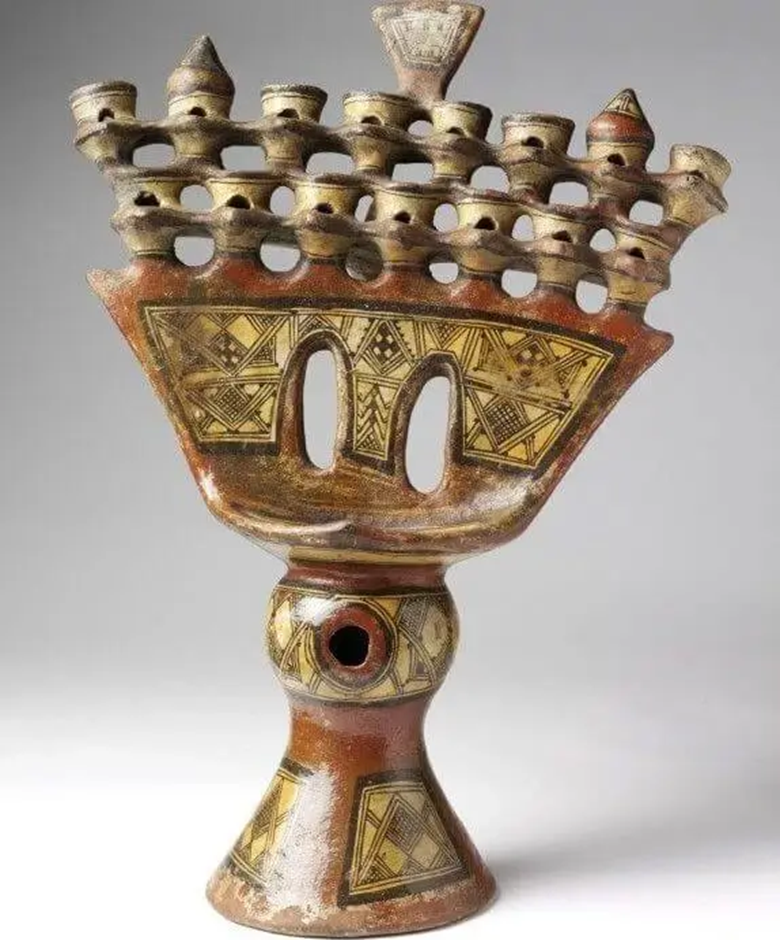The traditional Algerian tattoo, a meaningful treasure

Algerian culture
The traditional Algerian tattoo is the oldest surviving Berber rite whose origins go back well beyond the beginning of Islam.
Its practice has significantly declined with the advent of this religion which prohibits irreversible body modifications. However, the traditional tattoo still remains in certain regions where the dominant traditions mix with Islam.
In some rural areas of the Maghreb, you can still find women, often elderly, with faces covered with these traditional Berber symbols. In other regions, henna is used to revive these meaningful ancestral practices.
The origins of traditional Algerian tattooing

Photo: Woman of Ouled Naïl – 1905 – Lehnert Landrock
The traditional tattoo is one of the oldest known Berber rites practically reserved for women who could get tattooed from a young age. This practice which means drawing or marking the skin among the Tahitians is known from North Africa to the depths of Oceania. It consists of marking the skin with symbols by depositing ink inside the skin.
In Algeria, in the Berber language the tattoo is called “El-ayacha” which means the one who gives life and in the Kabyle language it is called “achrad” which means to vaccinate and the two names are related to its therapeutic effect.
Several other uses have been attributed to traditional Berber tattooing. Among other things, we find aesthetics, protection or clan affiliation.
By way of example, in the Chaouie region where research has been done on traditional tattooing by the anthropologist Yasmin Bendaas , women were tattooed by nomadic women from the Algerian Sahara or Tunisia who spoke Arabic and who exchanged their service against foodstuffs or other products in the manner of barter. With the disappearance of the latter and the advent of Islam which prohibits these practices, these women had disappeared.
A feminine tattoo par excellence

Photo: Algerian woman – 1960 – Marc Garanger
Despite the lack of documents and sources to know the origin, meaning and value of traditional Algerian tattooing, some anthropologists have been able to study the theme and attribute plausible explanations to it.
Some believe that these symbols that adorned the faces of Berber women were a way to make themselves ugly in order to protect themselves from colonial soldiers and keep them away so as not to be attacked. Others considered that the traditional tattoo was above all an ornament. According to Alfred Arzouk, anthropologist professor and member of the Royal Institute of Amazigh Culture in Morocco, the tattoo should be considered above all as an adornment because of the sense of aesthetics that characterizes the Berbers.
The anthropologist Susan Stewart supports this thesis, justifying it by the authenticity of the symbols which varied from one woman to another, something which cancels the hypothesis of belonging to a clan or other because the patterns are necessarily uniform in these cases. . Which means that Berber tattoos are purely ornamental and aesthetic according to these researchers.
Meaning of Berber tattoo designs

Photo: Symbols of the Ouadhias tribe – M. (white father) Devulder
The tattoo is a set of symbols that women had drawn on the forehead, the cheeks, the chin or even on the chest or above the ankles. These symbols are not meaningless. The mostly illiterate women of the time found a way for themselves to communicate, express themselves and convey messages. Similar motifs are used in the crafts practiced by women such as tapestry, pottery, jewelry or even painting and engravings.
These patterns therefore consisted of a real system of communication, a real secret alphabet of which only ancient women hold the secret. An alphabet from which women communicated their know-how, their ancestral esoteric knowledge, their values but above all certain wisdoms and certain philosophies which were transmitted from woman to woman.

Photo: M'zab Carpet – Ministry of Territorial Development, Tourism and Handicrafts
Lucienne Brousse has collected in beauty and feminine identity the Berber feminine tattoos of the regions of Biskra and Touggourt . Hundreds of drawings and testimonies were collected by her friend the nurse Eliane Ocre that Lucienne Brousse had collected in a Berber tattoo reading manual which currently consists of a real ethnographic record with chapters that explain very complex signs very difficult to decipher .
Patterns and symbols in traditional Berber tattooing

Photo: Hoggar Tuareg pendant – Blood on the Leaves
Geometric shapes are mainly used in the realization of these symbols and patterns, thus we find rhombuses, crescent moons, stars, squares and triangles which always convey a message or a value such as honesty, frankness, fertility, strength, opulence or even joy or sadness.
In Tunisia, for example, as marriage approaches, the husband offers his future wife tattoos as a dowry. Elsewhere, a widowed woman traces her chin to symbolize her late husband's beard. A young bride transmitted through her symbols her feelings in her new life to her mother who often understood this massage without having to say a word.

Photo: Oil lamp, Kabylie, 1868 – Collection of V&A
The traditional Algerian tattoo is an essential component of the intangible heritage of the country which should be studied in depth so that future generations know it.
https://topdestinationsalgerie.com/le-tatouage-traditionnel-algerien-un-tresor-lourd-de-sens/?fbclid=IwAR2xNWUAQAYDmxunYmMAqM73ddW3wgkQ26spcAkXsW1hKdeywniMKplN1YE

